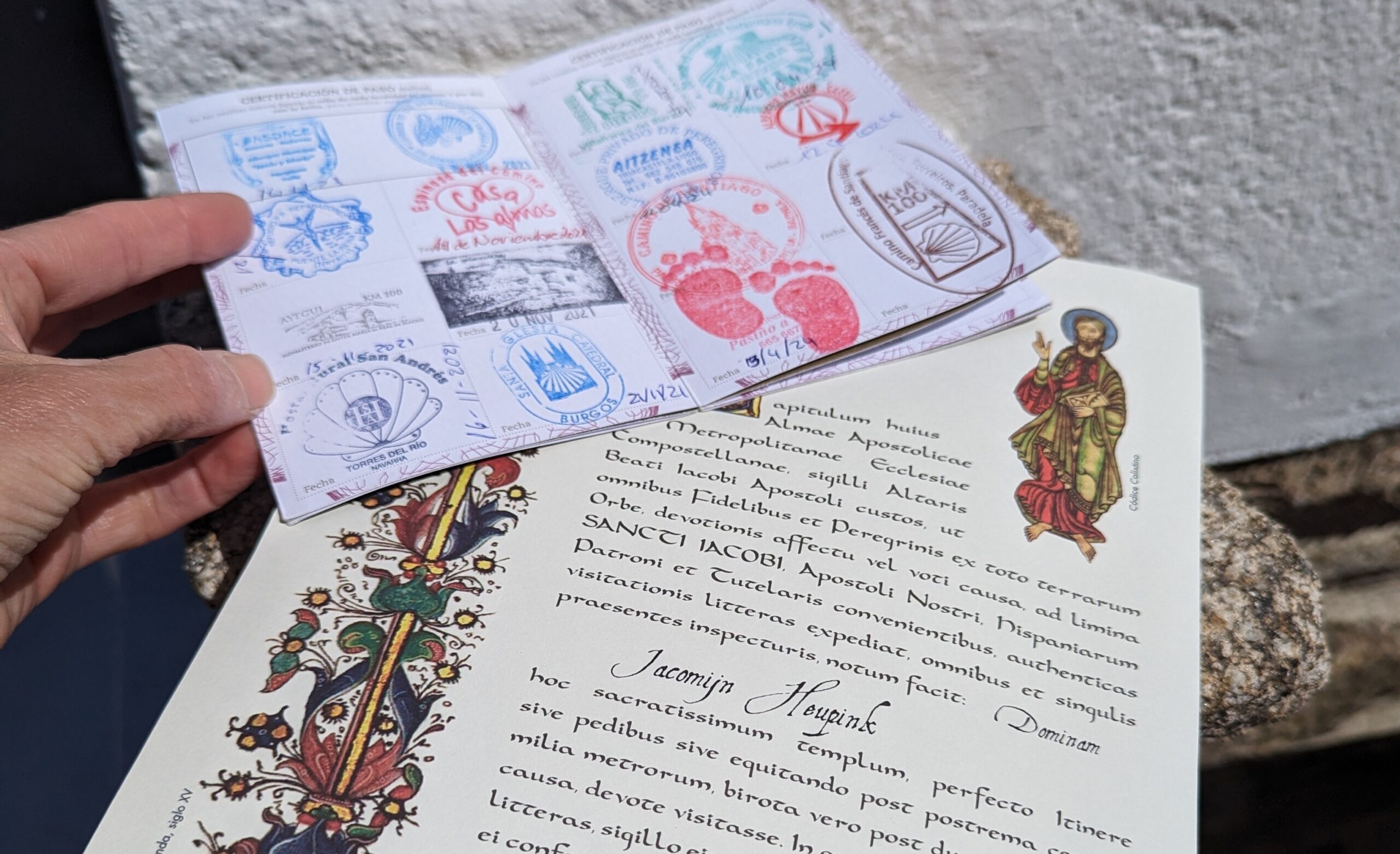Are you going to walk the Camino de Santiago? Everything you want to know about this ancient pilgrimage can be found in this comprehensive guide. Questions like: what’s the best time to walk the Camino, what do you pack in your backpack, and how many kilometers do you walk per day? I’ve walked the Camino Frances several times in recent years and I’ve learned a lot about this impressive pilgrimage. Let me share my experience to help you plan your Camino de Santiago.
📋 Camino de Santiago Quick Facts 2025
├ Cost: €50 per day
├ Duration Camino Frances: 30-35 days
├ Best period: April-June & September-October
├ Minimum for Compostela: 100 km walking
└ Safety: Very safe, even for solo female travelers
I often get questions about walking the Camino, and I will answer them all in this article. If you are planning to walk the Camino de Santiago, this article is perfect for you as you prepare for your journey.
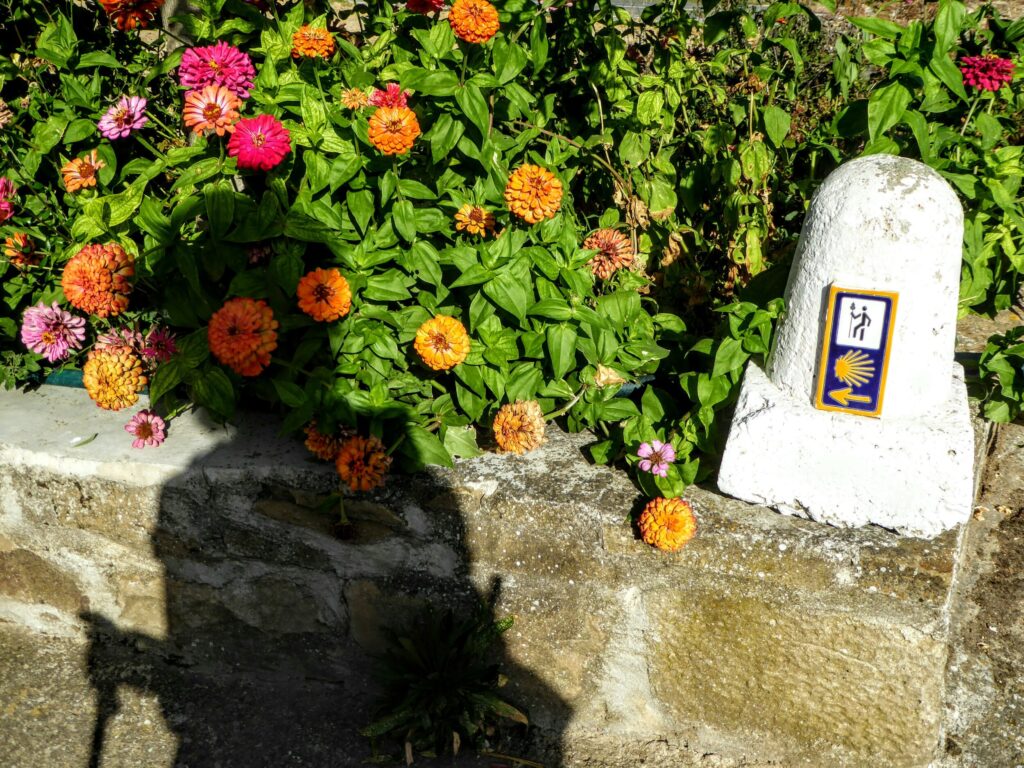
Which Camino de Santiago Routes Are There in Spain?
There are various Camino routes in Spain that all lead to Santiago de Compostela. The most famous and therefore also the busiest is the Camino Frances (French Way). This popular route runs from Saint Jean Pied de Port in France through the cities of Pamplona, Burgos, and Leon to Santiago de Compostela. This pilgrimage takes you 780 km on an unforgettable journey.
The Most Popular Camino Routes in Spain:
- Camino Frances (780 km) – Saint Jean Pied de Port to Santiago
The classic route, ideal for first-time pilgrims. Best infrastructure and most social. - Camino del Norte (850 km) – along the north coast, quieter
Stunning coastal scenery, more challenging terrain. - Camino Primitivo (321 km) – starts in Oviedo
The original pilgrim route, mountainous and less crowded. - Camino Ingles (112 km) – starts in Ferrol, short and accessible
Perfect if you have limited time, the shortest official route. - Via de la Plata (960 km) – starts in Seville
The longest route, very quiet with diverse landscapes. - Camino Portugues (630 km) – starts in Lisbon
One of the easiest Camino routes with flatter terrain.
Camino de Santiago Route from the Netherlands
There are also many pilgrims who depart from the Netherlands when walking the Camino de Santiago. You’ll then cover about 2,500 kilometers, depending of course on where you live and which route you take. Count on needing about 3 months to complete the entire journey. If you start in the Netherlands with addresses via Friends on Bikes (Vrienden op de Fiets), you’ll enter a network where you’re very often given an address for your next overnight stay.
How Many Kilometers Per Day Should You Walk on the Camino?
Ultimately, you decide for yourself how many kilometers you’ll walk per day on the Camino once you’re on the way. The established stages are all around 20 to 30 kilometers per day. Especially if you’re walking the Camino Frances, there are many albergues (pilgrim hostels) along the route and you can arrange your overnight stay in almost every town. My shortest day was 14 km because I had 5 blisters and my longest day was over 40 km. You have complete freedom in this, and that’s precisely what’s so nice about walking the Camino.
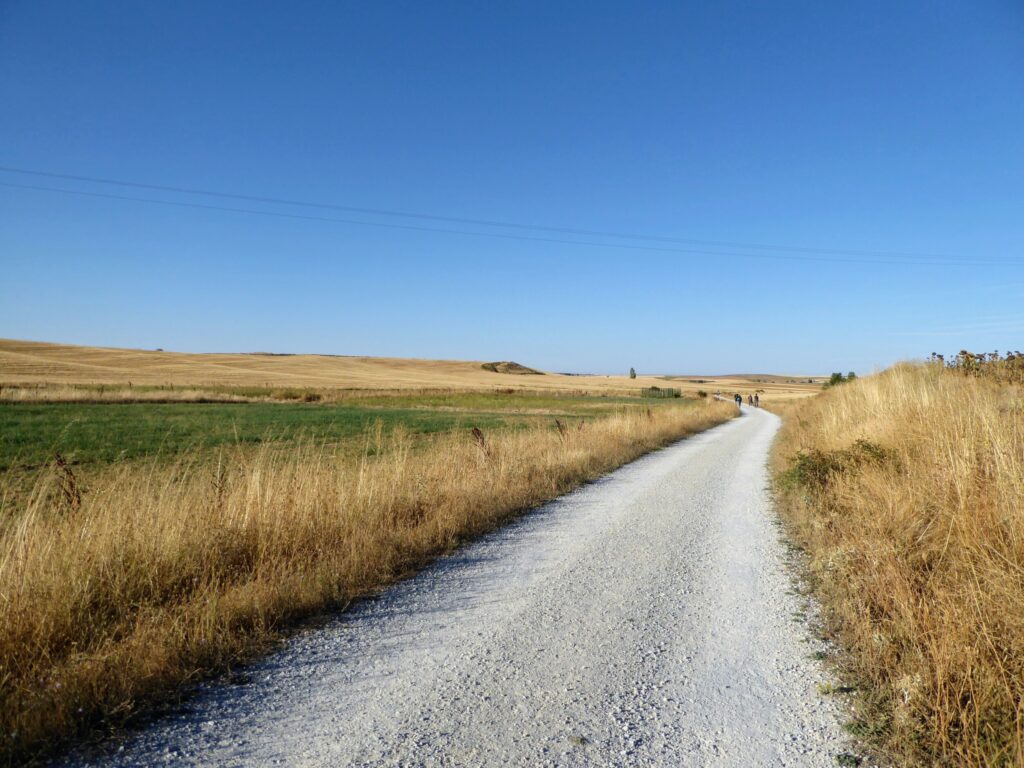
Recommendation: Start with 20-25 km per day and adjust based on how you feel.
How Long Does It Take to Walk the Camino de Santiago?
How long you walk on the Camino obviously depends entirely on which Camino route you choose. The Camino Frances takes about 30 to 35 days for most people. That route is 780 kilometers. You can of course choose a number of days and start however many stages from the end on your chosen route. For example, I offer an 8-day trip that ends in Santiago de Compostela. Because yes, you obviously want to end your pilgrimage at that beautiful cathedral.
Popular Options:
- Full Camino Frances: 30-35 days (780 km)
- Last 100 km from Sarria: 5-7 days
- Camino Portugues from Porto: 12-14 days
I offer the Camino de Santiago – 200 km pilgrimage in 8 days
What Does the Camino Cost Per Day?
The costs of walking the Camino are relatively low when you compare this to another hiking vacation or trip. The albergues are cheaper than hotels, the pilgrim meals (menú del peregrino – 3 courses with water and wine) are also quite cheap, and along the way you don’t buy anything more than what you need and what you can eat. After all, you don’t want to carry anything more than necessary.
💰 **Budget Breakdown per dag:**
– Albergue: €12-20
– Food: €25-35 (incl pilgrimsmenu)
– Occasional extras: €5-10
Totall: ±€50 per day
Where to Stay on the Camino: Albergue Guide
I find it most enjoyable to stay overnight in the albergues when walking the Camino de Santiago. You’re then present in pilgrim life day and night. You meet the most people and really become part of the ‘community’. The albergues also have a lot to offer pilgrims. Think of space where you can wash and dry clothes but also supplies to treat your blisters, etc.
Should You Reserve Accommodation in Advance?
There are options to reserve accommodation in an albergue. Not all albergues are open to this, but if you want to know in advance where you’ll sleep but still in an albergue, the following websites are useful:
- caminosleeps.com – Many albergues for the Camino Frances
- gronze.com – Albergues for the Camino del Norte, Portugues, and others
Great websites to visit, if only to see what’s available when planning your Camino.
Best Time to Walk the Camino de Santiago
Between April and October is the best time to walk the Camino de Santiago. Most albergues are open then, the weather is nice, and along the route you’ll encounter the most donativo spots. By that I mean, people who stand along the Camino to give you something to drink and eat in exchange for a donation. But also people who make music and encourage you during the sometimes difficult pilgrimage.
In the middle of summer it’s less pleasant to walk on the Camino de Santiago because it can get really hot. I recommend planning your pilgrimage in the pre- and post-season. The months April/May/June and September/October are, if you ask me, the best months to walk your Camino de Santiago.
Why These Months Are Ideal:
- Comfortable temperatures (15-25°C)
- Fewer crowds than peak summer
- Most facilities open
- Beautiful landscapes
🎯 Ready to book? Join me on pilgrimage in April / May 2026.
Extra tip: Make sure you arrive in Santiago de Compostela on a weekday. I have been to Santiago several times at the weekend and there are always events on the Praza do Obradoiro in front of the cathedral. If you arrive after a long journey, it’s not much fun being in such a busy square with people who are not pilgrims.
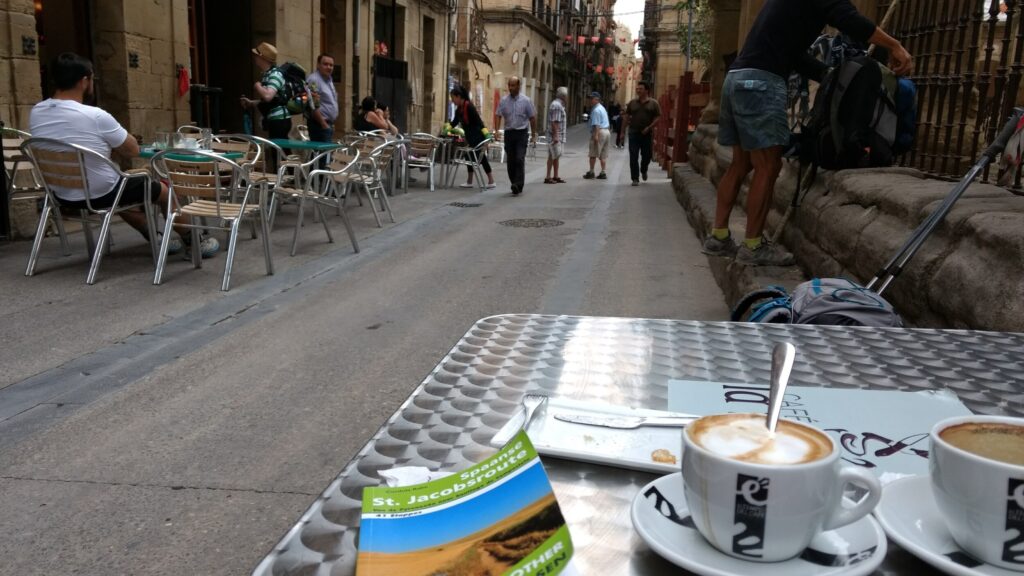
What is the Most Beautiful Camino Route?
This is of course very personal when choosing your Camino route. Do you like to walk along the coast? Do you find it nice when it’s quiet on the route?
I’ve walked a lot on the Camino Frances and found the added value of this Camino to be that it was so ‘busy’. Especially during my first pilgrimage in 2016, I had a lot of support from my fellow pilgrims and I found it ideal that I could stop in every village for an overnight stay. That can be difficult on less busy Caminos like the Camino Primitivo or Via de la Plata.
Is Walking the Camino Difficult?
The daily stages are generally very manageable when walking the Camino de Santiago. If you’re going to walk for several consecutive days, there’s naturally always a more difficult day in between, for example due to many elevation gains. If you have average fitness and can walk well, a Camino is quite achievable.
The Camino del Norte is one of the more difficult Caminos. This runs along the coast and you regularly go from sea level back into the land to get beautiful views over the coast.
Whether a Camino is difficult for you often has more to do with the psychological aspect than with your physical condition. This is different for everyone.
Difficulty by Route:
- Easiest: Camino Portugues
- Moderate: Camino Frances
- Challenging: Camino del Norte, Camino Primitivo
Camino de Santiago Health Tips: How to Prepare
To complete the Camino de Santiago successfully, it’s good to improve your fitness beforehand for this multi-day hike. It’s not nothing to go on pilgrimage for several consecutive days, but I also have the experience that for many people it turns out to be easier than expected afterwards. Nevertheless, it’s very good to ensure that you have good fitness and health.
If you’re prone to injuries, work on them during your Camino de Santiago. You can do this by stretching before or after walking. This keeps your muscles and joints supple and better able to withstand the exertion of walking on the Camino.
Prepare Well for the Camino:
✅ Train 3-6 months in advance with long walks
✅ Test your shoes and socks during training
✅ Stretch before/after walking to prevent injuries
✅ Ensure blister prevention (Compeed, taping, proper socks)
✅ Improve your fitness with cardio training
Is the Camino Safe to Walk?
Is the Camino de Santiago safe for solo female travelers? Yes! The Camino is a very safe place to walk, even alone as a woman. There are, as everywhere, known incidents, but overall that’s a minimal percentage.
Because you walk with so many people on popular routes like the Camino Frances, you can quickly find a companion to walk with in places where you feel less comfortable walking. For example, on an empty stretch between two villages, in a forest, etc. Take an extra break, for example, and soon someone will catch up with you who you can join.
The pilgrim community naturally looks out for each other, making the Camino one of the safest long-distance walks in the world.
What Does Walking a Camino Do to You?
There’s a life before your Camino and a life after. And that’s really how it felt! The Camino, pilgrim life, can really change you. I think a prerequisite for that is that you go on pilgrimage alone for several days and therefore have a lot of contact with fellow pilgrims. Hearing each other’s stories and finding connection with other pilgrims.
But slowing down on the Camino, literally moving forward slowly day after day, is also so good for us.
You reflect, get time to think, usually in a pleasant environment that helps you make good connections. A forest, a valley with beautiful views, but also new paths/crossroads and villages. In walking coaching, these kinds of moments and environments are used to reflect and let new thought patterns emerge. This will happen unconsciously in your brain and you’ll gain new insights into perhaps deeply rooted beliefs.
✨ Do you want to experience this transformation too? Join my guided Camino trip and discover what pilgrimage does to you. [MORE INFO]
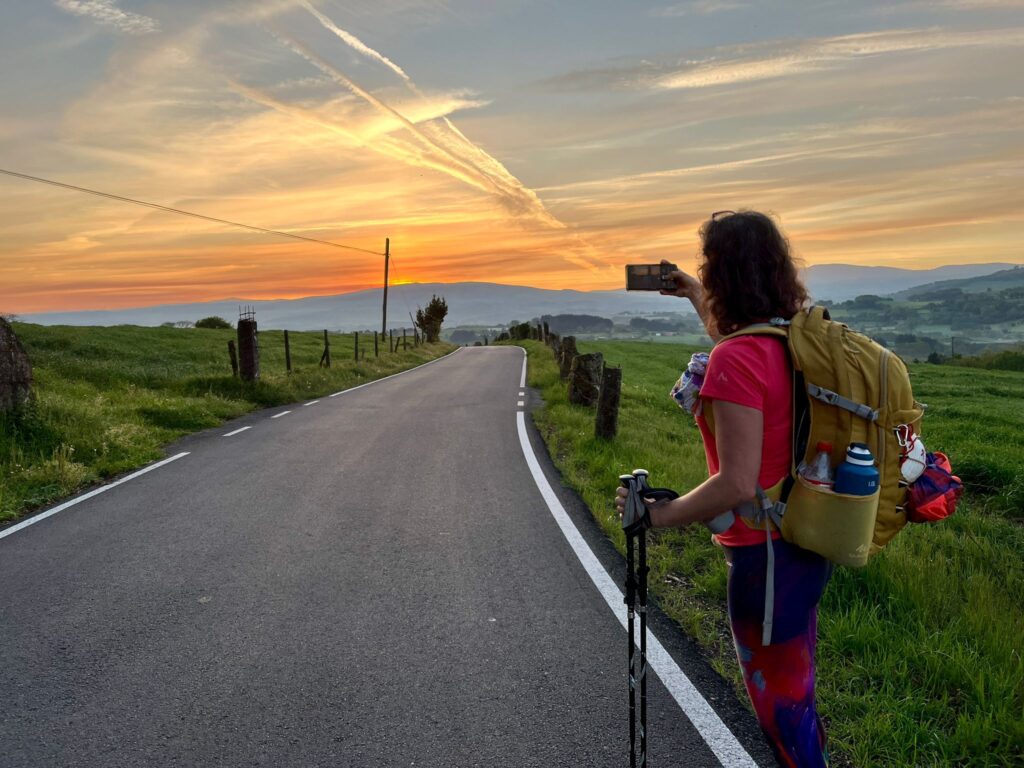
Walking the Camino de Santiago: Alone or Together?
As I mentioned above, I think you get the most value from a pilgrimage if you walk the Camino alone. You then enter a global community where you help each other, without expecting anything in return. I really enjoyed that aspect, you’re just there for each other without expectations. Without even knowing each other. A day later you might be able to do something for someone else in return…
On the trip I organized, there were also hikers who ate dinner with the group every evening but walked alone during the day and thus had conversations with other pilgrims. But they also had completely different experiences by visiting other beautiful spots and using different rest stops.
Compostela for Beginners
Do you want to walk the Camino alone, on your pilgrimage? Yes, do it! When I was going to walk my first Camino de Santiago, I had read a lot about it and started walking 9 months before the start. When I left, I had never walked a hiking trip of more than 20 km. Yet I was convinced that I could do it. My Camino motivation was very high! And yes, I could do it! In 35 days I walked from Saint Jean Pied de Port to Santiago.
What to Pack for the Camino: Equipment Essentials
🎒 Essentials for your backpack:
Weight rule: max 10% of your body weight (including water)
Must-haves:
- Good hiking shoes (broken in!)
- Quick-drying clothing (2-3 outfits)
- Compeed for blisters
- Pilgrim passport (Credencial)
- Rain jacket
- Sleeping bag liner
- First aid kit
- Water bottles (2L total capacity)
Pro tip: Pack light! Every extra item means more weight on your back for 20-30 km daily.
Read my packinglist for pilgrims and want to know what your budget is?
Luggage Transport on the Camino
If you choose a day to walk the Camino without luggage or choose, for whatever reason, not to walk with your luggage on the Camino at all, that’s possible. There are various transport companies active on the different Caminos. For example Jacotrans, Camino Facil, or El Camino Con Correos.
How Do You Arrange Luggage Transport on the Camino? That’s very easy because every albergue has envelopes that you can attach to your luggage for this purpose. On it you write the name and location of your next albergue and put in the amount they charge for the service. In 2025, the costs were €4 to €6 per trip, depending on the transport company. You put the bag/suitcase downstairs around 8 o’clock, which is also the time you have to leave the albergue. And around noon the bag is always at your next albergue.
Are You Going to Do the Camino by Bike, on Foot, or on Horseback?
Did you know that different kilometers are required from pilgrims who want to receive a Compostela?
Distance Requirements:
- On foot: Minimum 100 kilometers
- By bicycle: Minimum 200 kilometers
- On horseback: Minimum 100 kilometers
The most popular starting point for the 100 km minimum is Sarria on the Camino Frances.
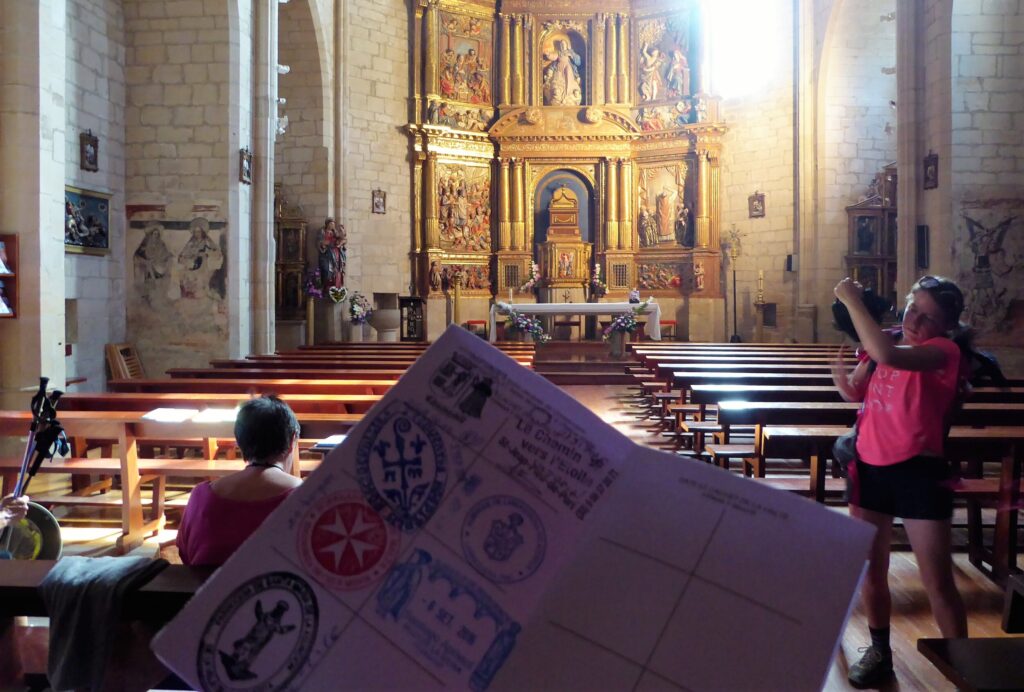
Credencial – Pilgrim Passport
To prove that you’ve covered a certain distance on the Camino de Santiago, you need a pilgrim passport. It’s called a credencial and this document is requested when you want to collect your Compostela in Santiago. You can buy a pilgrim passport when you start walking in Spain at a cathedral/church or Camino tourist information office (several along the route) but also at some bookstores or churches in the Netherlands.
At the front of the pilgrim passport you’ll find a QR code with which you can register at the start. If you haven’t done this, you can do so at one of the pillars at the office. This contains your personal data and start date and the place where you started.
Read all about why pilgrims collect stamps in a passport along the way
Collecting Your Compostela in Santiago de Compostela
When you’ve arrived in Santiago after a long pilgrimage, you want to collect your coveted Compostela certificate. You’re standing on the Praza do Obradoiro at the cathedral and there’s actually no arrow pointing you where to go anymore. That can feel quite strange! For me it was a very harsh Back to Reality.
Location: Oficina de Acollida o Peregrino – Rua das Carretas 33
(Click for GPS coordinates to find the pilgrim office)
If you’re going to get your Compostela as a group, it’s still nicer to register as an individual. The volunteers sitting here have a nice little chat with you when you receive your Compostela. With groups, you receive a stack of Compostelas as a group that you then have to distribute among yourselves. I find this a shame, you’ve sweated and cried quite a bit for it and then a small encouraging chat is really worth a lot!
Attending the Pilgrim Mass in the Cathedral
Every day there’s a pilgrim mass at 12 noon and at 7:30 PM that you can attend after your arrival. During the service, the nationalities that arrived that day and where they started their pilgrimage are announced. If you also want to be mentioned, you must indicate this when you collect your Compostela. It’s really nice to hear it during the mass.
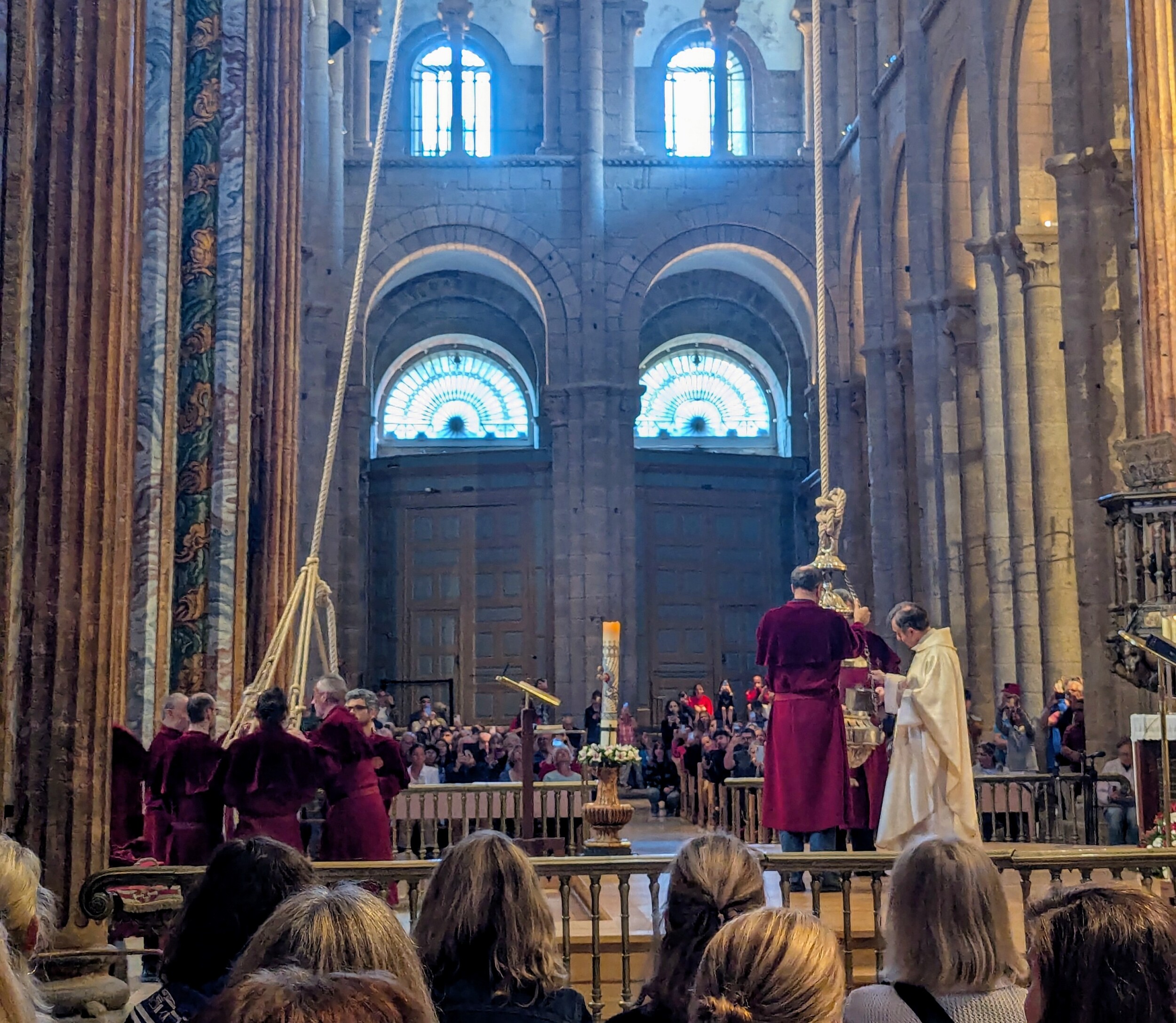
With a bit of luck you’ll also see the botafumeiro swing through the cathedral! I’ve now seen it happen 3 times and it remains truly impressive!
Did you know that the botafumeiro is the largest incense burner in the world? It is about 1.5 metres high and weighs no less than 53 kilograms!
The Dutch / Flemish Living Room
When you’ve received your Compostela, you’re also warmly invited to have a cup of coffee or tea on the first floor in the office. Here sit two volunteers with whom you can briefly talk about your pilgrimage. You’ll meet other pilgrims who have also arrived from other routes perhaps. It’s a nice conclusion to your pilgrimage.
Would you also like to walk the Camino but don’t quite dare to take the first steps? Contact me and let’s talk about those doubts.
Join me on pilgrimage:
- Walk the last 200 km to Santiago
- Or walk from Santiago to Finisterre / Muxia
Frequently Asked Questions About the Camino de Santiago
- How long does it take to walk the Camino de Santiago?
The Camino Frances typically takes 30-35 days for the full 780 km route. Shorter options include the last 100 km from Sarria (5-7 days) or the Camino Ingles (5-7 days). - What does the Camino cost per day?
Budget approximately €50 per day when staying in albergues and eating economically. This covers accommodation (€10-15), meals (€15-20), and incidentals. - When is the best time to walk the Camino?
April-June and September-October provide ideal conditions with comfortable temperatures and fewer crowds. Avoid July-August (too hot, crowded). - Can I walk the Camino alone as a woman?
Yes! The Camino is very safe for solo female travelers. The strong pilgrim community naturally provides support, and you’re rarely truly alone on popular routes. - Do I need to book accommodation in advance?
On popular routes like the Camino Frances, advance booking usually isn’t necessary except during peak season (July-August). However, booking provides peace of mind. - What’s the minimum distance to get a Compostela?
You must walk at least 100 km (or cycle 200 km) and collect stamps in your Credencial to receive the official Compostela certificate. - Is the Camino religious?
While the Camino has deep religious roots, most modern pilgrims walk for various reasons: spiritual growth, adventure, personal reflection, or cultural experience.
Ready to start your Camino de Santiago journey? With proper planning and preparation using this guide, your pilgrimage will be an unforgettable experience. Last updated: October 2025
